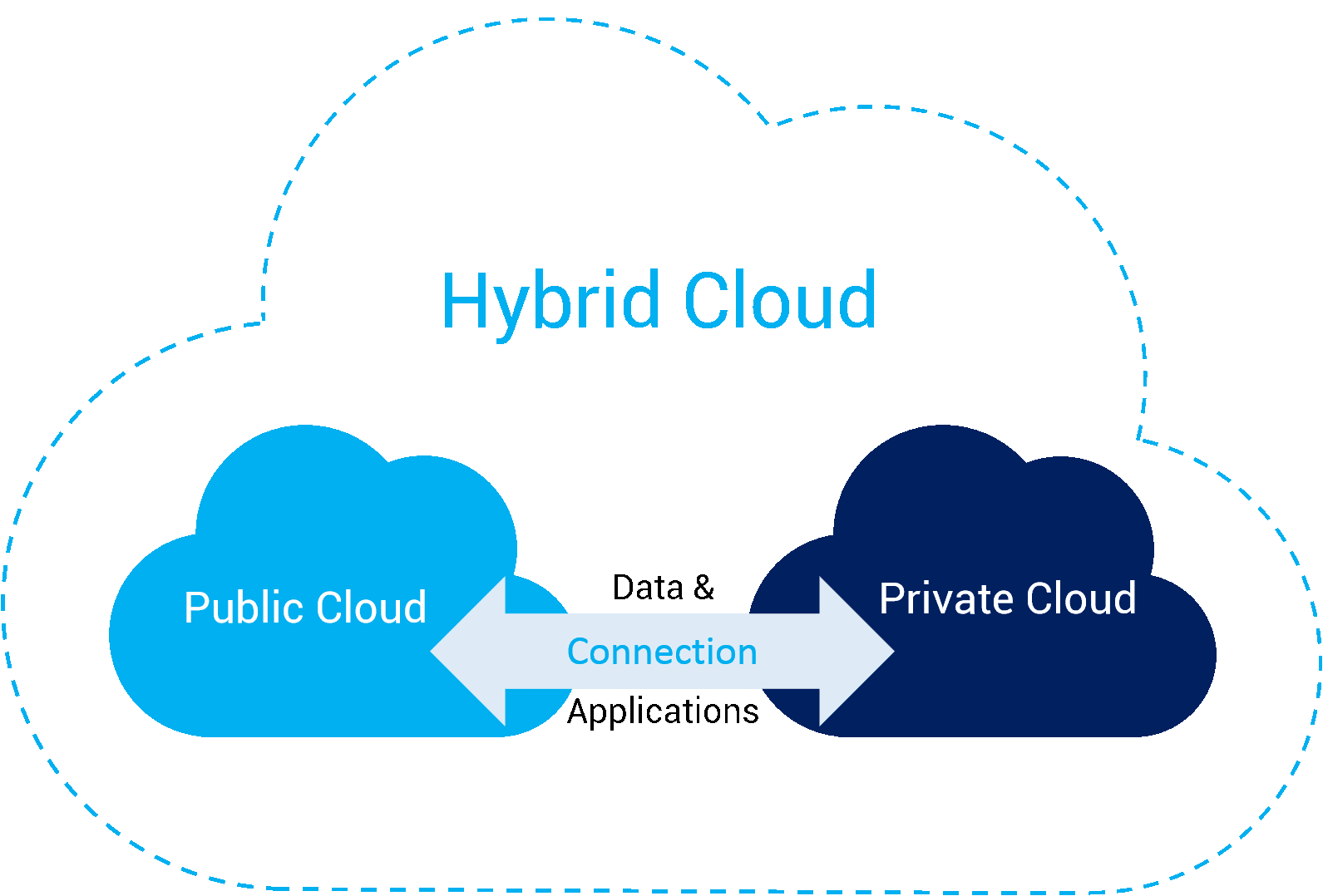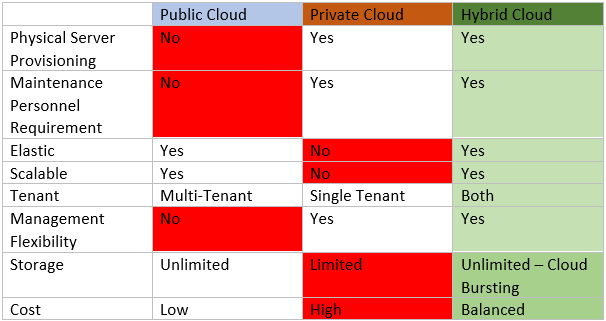By Shantanu Kaushik
Cloud computing is evolving. Many new concepts and practices are introduced regularly. Cloud computing started its journey as a virtual and remote infrastructure that enabled businesses and organizations to leverage strong backend services without having to pay an extraneous amount of money for physical computing resource assembly and management. Cloud computing offers many benefits to its users over the traditional method of computing. These benefits include elasticity, better collaboration, cost-cutting, mobility, upgrades, and security.
Using a public cloud is now a common practice, but that comes with a trade-off in performance. A private cloud is a go-to option. There is a growing demand for Hybrid Cloud solutions today, as it provides seamless scalability and ensures quick adaptation to changing business needs. The days of deploying resources are far behind. Now, customer-centric solutions have to be rolled out to capture the modern-day market.

A hybrid cloud is a mixture of all of the good things from public and private clouds. It addresses the expectations and challenges of public and private clouds and offers solutions. It provides a level of flexibility that public and private cloud platforms lacked. Hybrid Cloud architecture provides workload portability and management across public and private clouds. With the introduction of innovations like Artificial Intelligence (AI) and the Internet of Things (IoT), a desperate need for intelligent cloud solutions is rising. These solutions are possible with the Hybrid Cloud architecture.
Hybrid Cloud architecture includes:
Previously, ownership and location defined the traditional cloud computing architecture differences between a public and private cloud. Now, these practices have become much more evolved and complex. Today, public clouds don't necessarily run on off-premises since it runs with cloud services based on on-premise data centers.
A hybrid cloud is expected to:
A public or private cloud becomes a hybrid cloud setup when they are connected . When there is a sudden spike in traffic usage of applications running on a private cloud, these applications automatically burst and move to the public cloud. This is called “cloud-bursting.” This workload sharing enables resource management since new resources have to be provisioned when usage spikes happen. Instead, the load is intelligently shared to the public cloud. Based on the environment's capability, varied services can be accessed between public and private clouds. This is what gave birth to edge-computing.
Edge computing is a distributed computing resource that integrates information to edge nodes. It allows data to be processed in real-time without the need for it to be uploaded to a centralized processing system.
Let’s look at a comparison between public clouds, private clouds, and Alibaba Cloud Hybrid Cloud:

Alibaba Cloud Hybrid Cloud combines the best features from public and private clouds. Alibaba Cloud thought about the challenges organizations and development teams face and developed the Hybrid Cloud solution.
Let’s list a few concerns and how the Alibaba Cloud Hybrid Cloud solution addresses these concerns:
| Concerns | Solution |
|---|---|
| One of the primary concerns is compatibility, especially when you are using a mixed solution of public, private, and hybrid clouds. With different infrastructures, different tools come into play. These can lead to a not-so-perfect user experience due to compatibility issues. | Alibaba Cloud came up with auto scaling features that scale the Hybrid Cloud resources to meet the needs. This full-stack elasticity offers more than 50 product portfolios and an excess of 10,000 servers in the region. The standard development portal takes care of any compatibility issues with tools. |
| Another concern for any organization is security. When the information is handled and processed by multiple platforms, the risk of a breach or vulnerability is greater. | Alibaba Cloud offers a premium security solution with its Hybrid Cloud. This ensures simple, secure, and intelligent security services to care of any vulnerabilities and security concerns. |
| Whenever working with a multi-cloud approach, reliability and scalability are concerns that every development team needs to be ready for. While implementing a hybrid cloud approach, scalability is a given feature, but maintaining such stability on the application level might be a difficult scenario. These issues can have a negative impact on user experience. | Cross-geography disaster recovery and hot-upgrade capability take the reliability scenarios to the next level. Alibaba Cloud Hybrid Cloud ensures enterprise-level reliability by backing any service with a global infrastructure. The Alibaba Cloud Hybrid Cloud solution is backed with three data centers across two availability zones. |
| Tools and services are required to manage and operate an infrastructure. Open-source tools and support is a major concern when choosing a Hybrid Cloud solution. | Alibaba Cloud Hybrid Cloud supports various open-source tools and products with compatibility towards hardware to ensure interoperability. |
Alibaba Cloud Hybrid Cloud features Apsara Stack, Apsara Stack which is known for its industry-leading features and support. It provides machine learning (PAI), hyper-scale clusters, and multi-layered security. This ensures better business continuity.
Alibaba Cloud Hybrid Cloud supports both enterprise central node deployment and edge node deployment, also known as the Agility edition. Both of these solutions provide multiple solutions, panning over industries. This ensures a cost-effective setup.
The Hybrid Cloud solution is all about maintaining compatibility and simplifying the management of your deployment. If you can achieve this, your deployment is a successful one. Alibaba Cloud ensures success with seamless deployment scenarios that let you extend your services across on-premise and cloud-based resources. Centralized management ensures efficiency. Whether it is deployment across multiple clouds, DevOps practice, expansion, or troubleshooting, centralized management provides a swift experience.
These solutions collectively deliver a sophisticated Hybrid Cloud solution that responds well to business expansion. Alibaba Cloud Hybrid Cloud solution's disaster recovery, back, upgrades, and elastic scaling makes it a highly capable and reliable architecture.
1. Evolution of Hybrid Cloud Management
In this article, we will talk about Hybrid Cloud management and how it has evolved.
2. The Best Practices to Build a Hybrid Cloud
In this article, we will talk about the best practices to build a sophisticated hybrid cloud.
3. Implementation and Migration Scenarios of Hybrid Cloud
The views expressed herein are for reference only and don't necessarily represent the official views of Alibaba Cloud.
What to Expect from Alibaba's 2020 11.11 Global Shopping Festival

2,599 posts | 769 followers
FollowAlibaba Cloud Community - May 24, 2023
Alibaba Cloud Community - February 24, 2022
Alibaba Clouder - October 26, 2020
Alibaba Clouder - October 26, 2020
Alibaba Cloud Community - October 26, 2021
5544031433091282 - October 23, 2023

2,599 posts | 769 followers
Follow Hybrid Cloud Storage
Hybrid Cloud Storage
A cost-effective, efficient and easy-to-manage hybrid cloud storage solution.
Learn More Hybrid Cloud Distributed Storage
Hybrid Cloud Distributed Storage
Provides scalable, distributed, and high-performance block storage and object storage services in a software-defined manner.
Learn More Hybrid Cloud Solution
Hybrid Cloud Solution
Highly reliable and secure deployment solutions for enterprises to fully experience the unique benefits of the hybrid cloud
Learn More Networking Overview
Networking Overview
Connect your business globally with our stable network anytime anywhere.
Learn MoreMore Posts by Alibaba Clouder
Start building with 50+ products and up to 12 months usage for Elastic Compute Service
Get Started for Free Get Started for Free